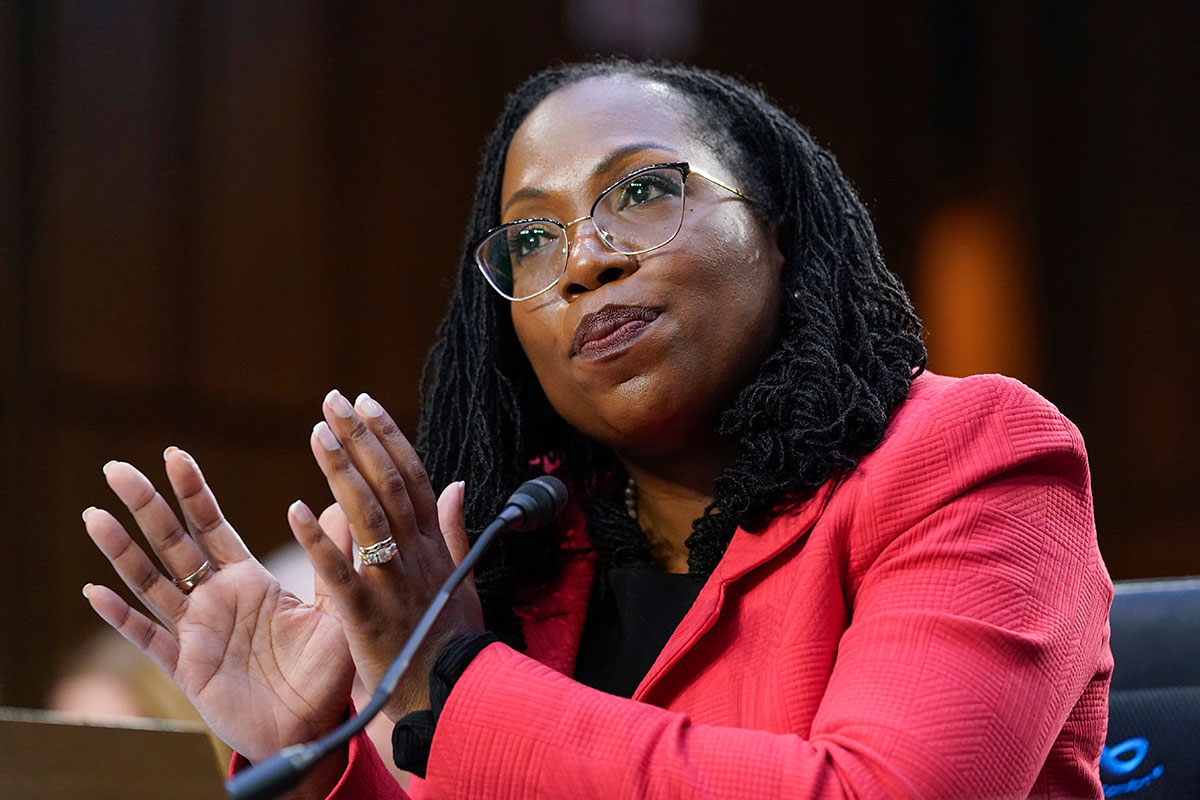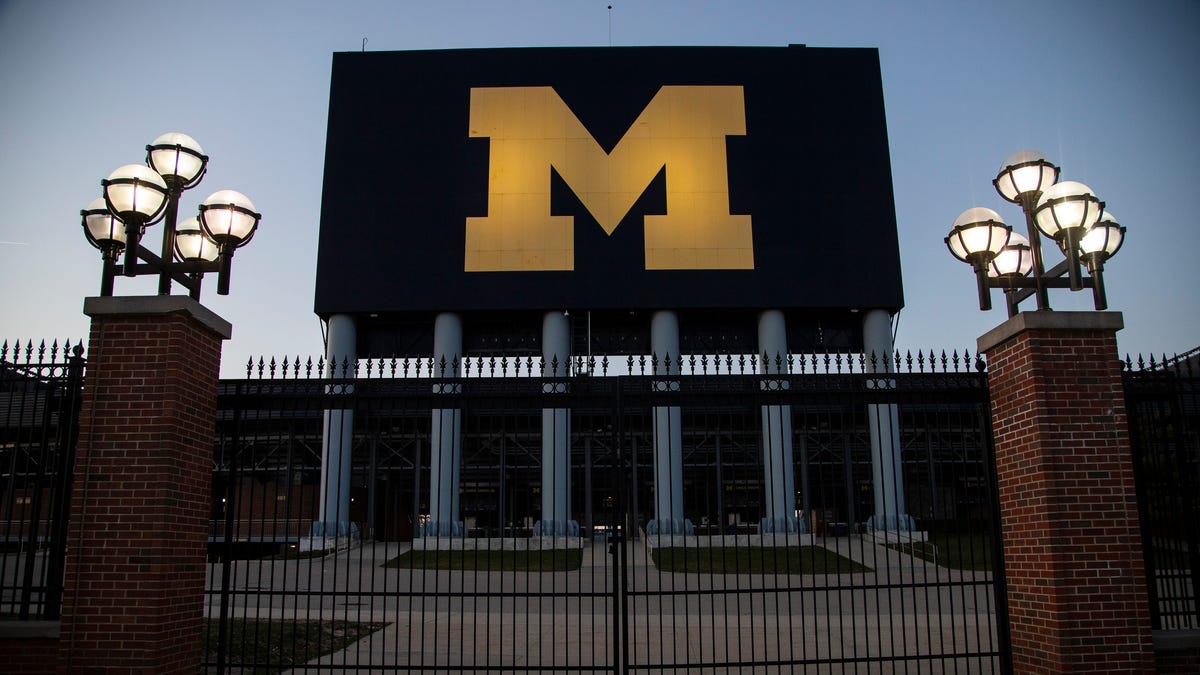Mississippi
Mississippi Jim Crow Voting Law Remains After Supreme Court Denies Appeal

Mississippi’s Jim Crow-era prohibitions on allowing people convicted of certain crimes to vote will remain after the U.S. Supreme Court declined to hear an appeal in the case today.
The 5th U.S. Circuit Court of Appeals ruled in favor of upholding the law last year in Harness v. Watson. Mississippi’s white supremacist leaders adopted it in 1890 in an attempt to disenfranchise Black residents for life. White lawmakers designated certain crimes that they believed Black people were more likely to commit as lifelong disenfranchising crimes. The law still disproportionately disenfranchises Black Mississippians at higher rates than white residents.
U.S. Supreme Court Justice Ketanji Brown Jackson recounted the law’s history today in a dissent against the court’s refusal to take the case. Justice Sonia Sotomayor joined her.
“The President of the 1890 Mississippi Constitutional Convention said it plain: ‘Let us tell the truth if it bursts to the bottom of the Universe … We came here to exclude the negro. Nothing short of this will answer.’ To further that agenda, the Convention placed nine crimes in §241 of the State’s Constitution as bases for disenfranchisement, believing that more Black people would be convicted of those crimes than White people,” Jackson wrote. “… Eight of those crimes have remained in §241 since 1890, without interruption. Thus, the Convention’s avowed goals continued to be realized via its chosen mechanism: Today (just as in the Convention’s aftermath), thousands of Black Mississippians cannot vote due to §241’s operation.”
During the Reconstruction era, newly emancipated Black Mississippians made enormous gains as Black men gained the right to vote. But in 1890, white Mississippi lawmakers began drafting a new constitution riddled with Jim Crow laws. The new system instituted an explicitly white-supremacist regime, with its drafters bent on disenfranchising, criminalizing and denying opportunity to the state’s Black residents.
The legislative committee that drafted Mississippi’s 1890 Constitution was initially explicit in its white-supremacist goals. They adopted a resolution declaring that “it is the duty of this Com. to perform its work in such a manner as to secure permanent white rule in all departments of state government and without due violence to the true principles of our republican system of government.”
They later revised the resolution, changing “white rule” to “intelligent rule.” Contrary to popular misconception, Jim Crow laws usually masqueraded as colorblind. But on the floor of the Mississippi Constitutional Convention, lawmakers were open about their intent.
After the state adopted that law as part of its constitution, along with other provisions like poll taxes and literacy tests, James K. Vardaman, one of its drafters, explained the goal: “There is no use to equivocate or lie about the matter … Mississippi’s constitutional convention of 1890 was held for no other purpose than to eliminate the n–ger from politics. Not the ‘ignorant and vicious’, as some of the apologists would have you believe, but the n–ger.” Supporters hailed Vardaman, who served as a Mississippi governor and U.S. senator, as the state’s “Great White Chief.”
Section 241 of the Mississippi Constitution originally permanently disenfranchised people who committed the following crimes: bribery, burglary theft, arson, obtaining money or goods under false pretense, perjury, forgery, embezzlement and bigamy. In their effort to only include crimes they believed Black people were most likely to commit, the white-supremacist drafters of the 1890 Constitution did not originally include murder and rape as disenfranchising crimes.
The State amended the Constitution in 1950, removing burglary as a disenfranchising crime. Later, in 1968, the 5th Circuit’s opinion says, the State made additional changes by voter referendum, including by adding “the ‘non-black’ crimes of ‘murder’ and ‘rape’ to the disenfranchising crimes in Section 241.”
“If Section 241 had never been amended, the provision would violate the Equal Protection Clause,” the U.S. 5th Circuit Court of Appeals’ majority said in its ruling last year. “… Critically, however, it has been amended.”
But in the period when Mississippi made changes to Section 241, the state’s white leaders and white residents were engaged in an often violent and deadly campaign of mass resistance to federal civil rights laws and protections. Even in 1968, long after the Brown v. Board ruling, Mississippi still maintained segregated public schools until the U.S. Supreme Court issued a final order to desegregate in 1969.
“To be sure, later amendments changed bases for disenfranchisement other than the eight at issue here: In 1950, burglary was removed from the list of disenfranchising crimes via the State’s amendment processes, and, in 1968, murder and rape were added via the same processes,” Jackson wrote in her dissent today. “… But, for federal constitutional purposes, the State never enacted any ‘new’ version of the original eight grounds for disenfranchisement. In 1950, voters could have either removed burglary from §241 or left §241 unchanged. So, too, in 1968—voters could have added murder and rape or left §241 unchanged. Id., at 319, 323–324 (Graves, J., dissenting). No other change to the original list of crimes was ever on offer. Therefore, the same discriminatory list of crimes that the 1890 Constitution’s ratifiers ‘ma[d]e into law by authoritative act’ operates to disenfranchise Mississippians who commit those crimes today.”
Jackson, who became the first Black woman on the U.S. Supreme Court when President Joe Biden appointed her last year, expressed regret that the court that failed to address the same issue over a century ago “blinks again today.” The ruling came a day after Chief Justice John Roberts delivered an opinion for the majority ruling that using affirmative action for race-conscious college admissions is unconstitutional.
“So, at the same time that the Court undertakes to slay other giants, Mississippians can only hope that they will not have to wait another century for a judicial knight-errant,” Jackson wrote. “Constitutional wrongs do not right themselves. With its failure to take action, the Court has missed yet another opportunity to learn from its mistakes.”
None of the justices who opposed hearing the case commented on their decision.

Mississippi
As Climate Threats to Agriculture Mount, Could the Mississippi River Delta Be the Next California? – Inside Climate News

This story was originally published by The Tennessee Lookout.
A smorgasbord of bright red tomatoes and vibrant vegetables line the walls of Michael Katrutsa’s produce shop in rural Camden, Tennessee. What began a decade ago as a roadside farm stand is now an air-conditioned outbuilding packed with crates of watermelon, cantaloupe and his locally renowned sweet corn — all picked fresh by a handful of local employees each morning.
The roughly 20-acre farm west of the Tennessee River sells about half of its produce through his shop, with the rest going to the wholesale market.
Farms like Katrutsa’s make up just a sliver of roughly 10.7 million acres of Tennessee farmland largely dominated by hay, soybeans, corn and cotton. Specialized machines help farmers harvest vast quantities of these commodity “row crops,” but Katrutsa said the startup cost was too steep for him. While specialty crops like produce are more labor-intensive, requiring near-constant attention from early July up until the first frost in October, Katrutsa said he takes pride in feeding his neighbors.
The World Wildlife Fund sees farms in the mid-Mississippi delta as ripe with opportunity to become a new mecca for commercial-scale American produce. California currently grows nearly three-quarters of the nation’s fruits and nuts and more than a third of its vegetables.
Explore the latest news about what’s at stake for the climate during this election season.
But as climate change compounds the threats of water scarcity, extreme weather and wildfires on California’s resources, WWF’s Markets Institute is exploring what it would take for farmers in West Tennessee, Mississippi and Arkansas to embrace — and equitably profit from — specialty crop production like strawberries, lettuce or walnuts.
Specialty crops make up only 0.19% of the region’s farm acreage, but their higher sale value allows them to generate 1.08% of the region’s agriculture revenue, according to WWF’s May report, called The Next California, spearheaded by Markets Institute Senior Director Julia Kurnik. She argues that there’s an opportunity to proactively create more inclusive, higher-yield business models on existing farms, preventing natural ecosystems from being unnecessarily transformed into farmland.
But shifting produce growth to the Mid-Delta comes with hurdles: it requires buyers willing to try new markets, understanding of new crops’ diseases and needs, specialized equipment like cold storage and lots of expensive hands-on labor.
“It is not as simple as a farmer simply putting new crops in the ground,” Kurnik said.
Early Adopters Put Idea to the Test
Sixth-generation Arkansas farmer Hallie Shoffner is putting WWF’s models to the test through a nonprofit called the Delta Harvest Food Hub. The hub works with Black and women farmers to pilot the scalability of growing specialty crops in the Delta region, starting with specialty rice.
Shoffner grows basmati, jasmine, sushi rice, sake rice seeds and more on her 2,000-acre, century-old farm located in an unincorporated town outside Newport, Arkansas. She’s skeptical about a full switch to produce, but sees specialty rice products as “low-hanging fruit” easily adopted in the mid-Delta, where commodity rice is already widely grown.
The United States is the fifth-largest rice exporter in the world, and Arkansas is the country’s top producer, with other Mississippi River valley states not far behind. But the majority of specialty rice is grown in California or imported from East Asian countries.




“We are forward-thinking farmers who want to change, who want to do something different,” Shoffner said. “We want to make more money, because we know we cannot make as much money as small farms in the current agricultural economy.”
The commodity farming that dominates Delta agriculture makes the economic success of farmers largely dependent on the market prices of rice, corn, soybeans, wheat and other crops, Shoffner said. This incentivizes farms to grow larger to ensure they turn a profit even when prices are low, like they are now. But smaller farms struggle to stay afloat.
Shoffner said her vision for developing specialty crop markets in Arkansas will be through more collaboration between many smaller farms to diversify crop production and produce for large contracts together. She’s also exploring possibilities for expanding chickpea, sunflower, sesame and pea production in Arkansas.
And while she’s at it, Shoffner is working to make agriculture more equitable.
“As a white farmer who is a sixth generation farmer, I realize that I have inherited a large amount of land that systematically disenfranchised Black farmers,” Shoffner said. “And it is my responsibility to acknowledge that, and leverage what I’ve been given to help others.”
Her project, Delta Harvest, has a contract to grow specialty rice with a large company and she’s working with several Black farmers. She was too small to do it by herself, so they are doing it cooperatively.
Finding the Right Markets
In Mississippi, efforts to shift some of California’s sprawling specialty crop industry to the Mid-Delta drew skepticism from some farmers—even those with established specialty crop operations.
For the past 20 years, Don van de Werken has co-owned a 120-acre blueberry and tea farm in Poplarville, Mississippi, distributing much of its crops to buyers in his county and nearby cities.
Van de Werken questioned whether there would be enough regional demand to sustain a scaled-up specialty crop industry in Mississippi, noting that the success of his own enterprise hinges on targeting hyper-local markets like New Orleans. Shipping vegetables, fruits and other produce to buyers outside the Delta region would quickly become cost prohibitive for local farmers, van de Werken said.
“The problem we have, not just in Mississippi but the mid South in general, is we just don’t have the population base,” said van de Werken, who is also president of the Gulf South Blueberry Growers Association. “We don’t want our blueberries to go to Maine or Seattle. We want to focus our produce in a regional market.”


To make growing specialty crops worthwhile, Mississippi farmers would need to identify nearby buyers willing to purchase the new products on a consistent basis, van de Werken said. While selling goods directly to retail grocery chains like Kroger is often difficult, farmers could reduce financial risks by signing purchasing agreements with regional brokers like Louisiana-based Capitol City Produce.
“Anybody that puts anything in the ground is already taking a risk, but you want to minimize that risk,” he explained. “If you can prove to the brokers and the buyers that they can make money doing this, then the farming will come.”
The WWF report investigates ways to distribute risk across the supply chain to make selling to new markets easier on farmers, and works to connect buyers with Mid-Delta farmers.
AgLaunch, a Memphis-based nonprofit that guides farmers in innovation, estimates that adding specialty crops to the Mid-Delta region could spur $4.6 billion in added revenue and 33,000 jobs. But while commodity crop prices are readily available on the Chicago Board of Trade, the specialty crop market is generally not so transparent. Large, vertically integrated companies usually dictate contract terms, AgLaunch President and farmer Pete Nelson said.
AgLaunch helps build “smart contracts” that allow multiple farmers to produce on a contract, helping them secure higher quantity deals with proper compensation as a collective.
This story is funded by readers like you.
Our nonprofit newsroom provides award-winning climate coverage free of charge and advertising. We rely on donations from readers like you to keep going. Please donate now to support our work.
Donate Now
Purdue College of Agriculture professor Fred Whitford said the idea of farming cooperatives that help smaller farmers carve out space in a large-quantity market is more than 100 years old. Whitford compared commodity producers to retail giants like Walmart, which make money by selling in bulk. Small producers are more like Ace Hardware, he said.
“Maybe the smaller folks have an ability to make more off their land by going to a specialty crop,” he said.
New Challenges Need New Solutions
Farmers who embrace specialty crops will face hurdles before they make it to the market.
Growing produce can be more profitable but “easier said than done,” Whitford said. “It’s nice on paper … but boy, in reality, you’re going to have to keep an eye on this crop, whatever you’re growing, because one slip up … then you have lost a lot of money.”
In Tennessee, Katrutsa grew strawberries in addition to his other crops for 10 years, but last April, a hail storm pulverized his entire field, leaving him with nothing. He’s not growing strawberries this year, and he might not plant them again — he’s not sure if he can find enough labor to make it work.
He grows many types of produce so if one fails, it’s less catastrophic. He sources seedlings from a neighboring state (it’s cheaper than growing from seed) and plants five times each season to maximize yield.
He works with a consultant to help identify diseases and how to treat them. Tomatoes are the most challenging, Katrutsa said. Some of his tomato plants withered this year due to bacterial wilt that flourishes in wet soil and high temperatures and has few effective chemical remedies.
Carolyn Preble helps out farmer Michael Katrutsa at the farm shop, which stocks the more than 20 acres of produce Katrutsa grows in rural Camden, Tennessee. Credit: John Partipilo/Tennessee Lookout
Chemical treatments pose other challenges. In Shaw, Mississippi, Michael Muzzi relies on a range of herbicides to grow soybeans and other feed grains on his 2,000-acre farm. Once sprayed, herbicides like Liberty and Dicamba remain in the ground and can drift in the air, which is hazardous to specialty crops, like tomatoes, that aren’t resistant.
“You’re not going to be able to spray [those herbicides] on specialty crops,” Muzzi said. “You’d have to have something that’s chemically tolerant.”
Growing fruits and vegetables on a farm with previous heavy herbicide use would require insulating those crops from chemical runoff — a feat that could only be reliably achieved by leaving whole acres of land unused for years, he said.
AgLaunch is exploring innovative ways to address these problems. For some farmers, this means helping make their existing row crops more efficient using farmer-incubated technology, adding local value by growing specialty crops or taking on processing, Nelson said.
Then there’s disruption with higher risk: farmers can partner with agriculture automation technology startups, allowing them to field test their products and collect data in exchange for farmer equity in the startup companies. If the startup succeeds, the farmer shares in the benefits.
“It’s not as simple as, ‘Hey, we should grow tomatoes,’” Nelson said. “It’s how you think about the whole value chain and make sure the farmer is protected. Make sure it’s not an opportunity just to grow a crop, but it’s an opportunity to own part of the processing or to build new products.”
Kurnik said WWF isn’t trying to recruit farmers to start growing specialty crops – they just want Mid-Delta farmers to have the information they need to make informed decisions. In terms of acreage, row crops “dwarf” specialty crops in the United States. A small percentage shift would mean a significant change in the level of specialty crops in the Delta.
“We don’t need everyone to want to jump on board tomorrow,” she said. “They would flood the market if they did.”
This story is a product of the Mississippi River Basin Ag & Water Desk, an independent reporting network based at the University of Missouri in partnership with Report for America, with major funding from the Walton Family Foundation. Disclosure: The Next California report was also funded by Walton.
About This Story
Perhaps you noticed: This story, like all the news we publish, is free to read. That’s because Inside Climate News is a 501c3 nonprofit organization. We do not charge a subscription fee, lock our news behind a paywall, or clutter our website with ads. We make our news on climate and the environment freely available to you and anyone who wants it.
That’s not all. We also share our news for free with scores of other media organizations around the country. Many of them can’t afford to do environmental journalism of their own. We’ve built bureaus from coast to coast to report local stories, collaborate with local newsrooms and co-publish articles so that this vital work is shared as widely as possible.
Two of us launched ICN in 2007. Six years later we earned a Pulitzer Prize for National Reporting, and now we run the oldest and largest dedicated climate newsroom in the nation. We tell the story in all its complexity. We hold polluters accountable. We expose environmental injustice. We debunk misinformation. We scrutinize solutions and inspire action.
Donations from readers like you fund every aspect of what we do. If you don’t already, will you support our ongoing work, our reporting on the biggest crisis facing our planet, and help us reach even more readers in more places?
Please take a moment to make a tax-deductible donation. Every one of them makes a difference.
Thank you,
Mississippi
Mississippi man dies of an apparent overdose in MDOC custody in Rankin County

A 41-year-old man incarcerated at Central Mississippi Correctional Facility in Rankin County died Thursday of an apparent overdose.
Mississippi Department of Corrections Commissioner Burl Cain confirmed the death in a news release.
The man was identified as Juan Gonzalez. According to prison records, he was serving a four-year sentence on multiple convictions in Hinds County and was tentatively scheduled for release in May 2025.
“Because of the unknown nature of the substance, the Mississippi Emergency Management Agency and the Mississippi Department of Health were notified,” MDOC reported.
The investigation into Gonzalez’s death remains ongoing.
This is a developing story and may be updated.
Mississippi
Mississippi high school football scores for 2024 MHSAA Week 2

Watch as Clinton begins season with 26-20 win over Warren Central in Vicksburg
Watch highlights from Clinton’s 26-20 win over Warren Central in the Arrows season opener Friday night.
Here is our Mississippi high school football scoreboard, including the second week of the season for MHSAA programs.
THURSDAY
Heidelberg 14, Quitman 8
Independence 20, Byhalia 6
Myrtle 47, Potts Camp 18
North Pontotoc 41, Water Valley 19
Okolona 40, Calhoun City 0
Provine 16, Lanier 6
-

 World1 week ago
World1 week agoEconomic portfolios are key in talks to chose new EU commissioners
-

 Movie Reviews1 week ago
Movie Reviews1 week agoSaripodhaa Sanivaaram Movie Review Rating
-

 News1 week ago
News1 week agoHarris kicks off Georgia tour as Trump posts grievances on social media
-

 Politics1 week ago
Politics1 week agoTrump impersonates Elon Musk talking about rockets: ‘I’m doing a new stainless steel hub’
-

 Politics1 week ago
Politics1 week agoEx-California resident slams state bill that gives illegal immigrants housing loans: 'Asinine'
-

 World1 week ago
World1 week agoBrussels, my love? Is France becoming the sick man of Europe?
-

 Politics1 week ago
Politics1 week agoTrump campaign slams Harris as 'still a San Francisco radical' after CNN interview
-

 Politics1 week ago
Politics1 week agoHarris says no regrets about defending Biden fitness for office
















